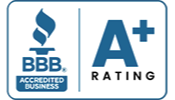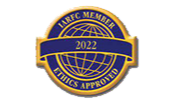Retiring with ample wealth is a universal goal, and saving up cash is a common strategy to achieve a carefree retirement. But is it possible to over-save for your golden years? The answer could surprise you.
To save or not to save. That is the question…
Since childhood, a common lesson is to save our pennies for the future. But as our money grows, the question shifts to whether we should invest that money or keep it secured for a rainy day. While investing our money can be risky, simply saving our money alone can result in loss.
Let’s explore what over-saving means and how to strike the right balance to maximize your financial resources. Here’s what you need to know.
Understanding The Risks of Over-Saving
Having extra savings is a problem many wish to have. But, over-saving or stashing away more funds than necessary for retirement can come with challenges.
A life led by excessive frugality might mean missing out on the very essence of what makes life rich and memorable: travel, hobbies, and cherished moments with loved ones. It also limits the potential for growth opportunities related to investing your money.
So, what are the pros and cons related to saving versus investing? Let’s delve deeper into the potential pitfalls of over-saving and why striking a balance is essential.
Pros of Saving Money for Retirement

1. Liquidity
Saving for retirement provides a crucial level of liquidity that investing may only sometimes deliver. Your money is readily accessible, allowing you to tap into it for emergencies without facing penalties or restrictions. Evaluating your comfort level with your current allocation between saving and investing each month is essential in managing your financial future effectively.
2. Protection from Market Volatility
It’s reassuring to know that your retirement funds can remain relatively shielded from the tumultuous swings of the financial markets. Many bank and thrift savings accounts offer an added layer of security through insurance provided by the Federal Deposit Insurance Corporation (FDIC), which protects your funds up to $250,000. In contrast, investing doesn’t come with such a safety net.
3. Predictable Growth
When you save for retirement, the growth of your funds is generally more predictable than the potentially unpredictable nature of investments. Savings accounts and other conservative options typically offer a fixed or predictable interest rate, though these gains are usually relatively small. This predictability can offer a clearer understanding of how your retirement savings will grow over time, making it easier to plan for your future financial needs with greater certainty.
Cons of Saving Cash for Retirement
1. Missed Market Gains
Traditional savings accounts help you opt for a conservative strategy while prioritizing safety over growth. While this approach shields your money from the inherent volatility of financial markets, it also means potentially missing out on substantial gains.
2. Limited Growth
Savings accounts, while offering security, often provide lower interest rates than the potential investment returns. Over the long term, this disparity in growth rates can lead to a situation where your savings fail to keep pace with the rising cost of living (inflation), potentially eroding your purchasing power during retirement.
3. Risk of Outliving Savings
A study by Cerulli Associates found the biggest worry for both retirement savers and retirees, at 58%, is outliving their money. As technological advances enable longer lifespans, the prospect of living well into retirement becomes increasingly likely. Investing offers the potential for higher returns, offering greater confidence that your savings will endure through your retirement years.
Pros of Investing for Retirement

Embracing the potential for financial growth and security, investing for retirement offers a path to unlocking a world of benefits that can significantly help to enhance your golden years.
1. Compounding Interest
One of the most significant advantages of investing for retirement is the power of compounding interest. When you invest your money, it has the potential to grow exponentially over time. Compounding allows your earnings to generate additional earnings, leading to substantial gains over the long term. The earlier you start investing, the more time your money has to benefit from compounding.
2. Potential for Higher Returns
When the value of your investments goes up. You can earn money on your investments when they increase in value. For example, a stock’s price won’t stay the same price forever — ideally, the company grows and makes money, and it becomes more valuable overall. Historically, investments in assets like stocks, bonds, and real estate offer higher average returns than traditional savings accounts. Although financial markets offer no certainties, investing opens doors to accelerated wealth accumulation, outpacing the growth achievable through saving alone.
3. Short-Term Opportunities
While most investors should avoid trying to time the market, there can be some excellent opportunities to earn sizable short-term gains if you’re a savvy and experienced investor.
4. Diversifying for Risk Management
Diversification is crucial for managing risk and achieving retirement goals. It spreads investments across multiple asset classes, reducing the impact of market fluctuations on retirement savings. A diversified portfolio includes asset classes with different risks and returns, such as stocks, bonds, and real estate.
Regular review and rebalancing of a diversified portfolio are essential. Working with a financial advisor can help you develop a well-diversified portfolio that aligns with your risk tolerance and retirement goals.
Cons of Investing for Retirement
1. Emotional Stress
Market volatility can lead to emotional stress, especially if you constantly monitor your investments. Many investors are “loss-averse,” meaning they feel the pain of losses more acutely than the pleasure of gains. Loss aversion can create a tendency to panic and make drastic changes to your portfolio when faced with losses. This can negatively impact your long-term financial goals.
2. Gains are Taxed
With few exceptions, stock market gains are taxable when you sell your holdings. If you sell a position that you’ve held for less than a year, any gains you earn will be taxed at your ordinary tax rate. If you hold on to a stock for more than a year, you’ll be able to take advantage of a lower long-term capital gains tax when you sell. But that cost will still eat into your return.
3. Inherent Risk
Investing always involves some level of risk. Markets can be unpredictable, and the value of your investments can fluctuate. There’s no guarantee that you’ll make a profit, and you could lose money, especially in the short term.
Finding The Right Balance

Choosing between investing and saving hinges on several crucial factors, including your risk tolerance, financial needs, and your money’s accessibility. Investing holds the promise of potentially yielding significantly higher returns than savings accounts. However, this advantage carries its risks, especially when considering shorter timeframes.
If you are struggling to find the perfect balance for you, working with a retirement income professional, such as a Fiduciary advisor can help. One of the most beneficial aspects of working with a Fiduciary is that they are legally required to put your best interests first, providing unbiased advice to help you make the most informed decisions. When choosing an advisor, asking relevant questions about their experience and approach to retirement income planning is a great first step. Doing so lets you determine if the advisor/firm aligns with your goals, needs, and beliefs.
Let’s Get to Work!
Saving and investing are often lumped together as the sole alternative to spending money, but each strategy has its own advantages and disadvantages. In general, you should save to preserve your money and invest to grow your money. Depending on your specific goals and when you plan to reach them, you may choose to do both.
Exactly how much to put toward savings versus investing depends on your current needs and your future goals, which is why seeking guidance from a financial professional can be beneficial in finding the right balance for you. At Agemy Financial Strategies, we’re here to guide you every step of the way.
Our team of Fiduciary advisors is well-versed in comprehensive retirement planning services to help you reap a steady income stream throughout your golden years. We aim to help you live a rich life in every sense of the word, making the most out of every financial resource possible. Ready to get started?
Contact us today to schedule your complimentary consultation.
Disclaimer: This content is for educational purposes only and should not be considered financial or investment advice. Please consult with the fiduciary advisors at Agemy Financial Strategies before making any investment decisions.


 1. Real Estate Investments
1. Real Estate Investments
 Having a Tax-Efficient Strategy
Having a Tax-Efficient Strategy

 Lower Borrowing Costs
Lower Borrowing Costs
 Alternative Real Estate Investment Strategies
Alternative Real Estate Investment Strategies
 The Importance of Diversification in Retirement
The Importance of Diversification in Retirement
 Take Control of Your Retirement with Agemy Financial Strategies
Take Control of Your Retirement with Agemy Financial Strategies
 Savings and Investments: Adapting to a New Landscape
Savings and Investments: Adapting to a New Landscape
 The Importance of Fiduciary Guidance
The Importance of Fiduciary Guidance
 Diversify Your Investments
Diversify Your Investments

 Seek Professional Guidance
Seek Professional Guidance

